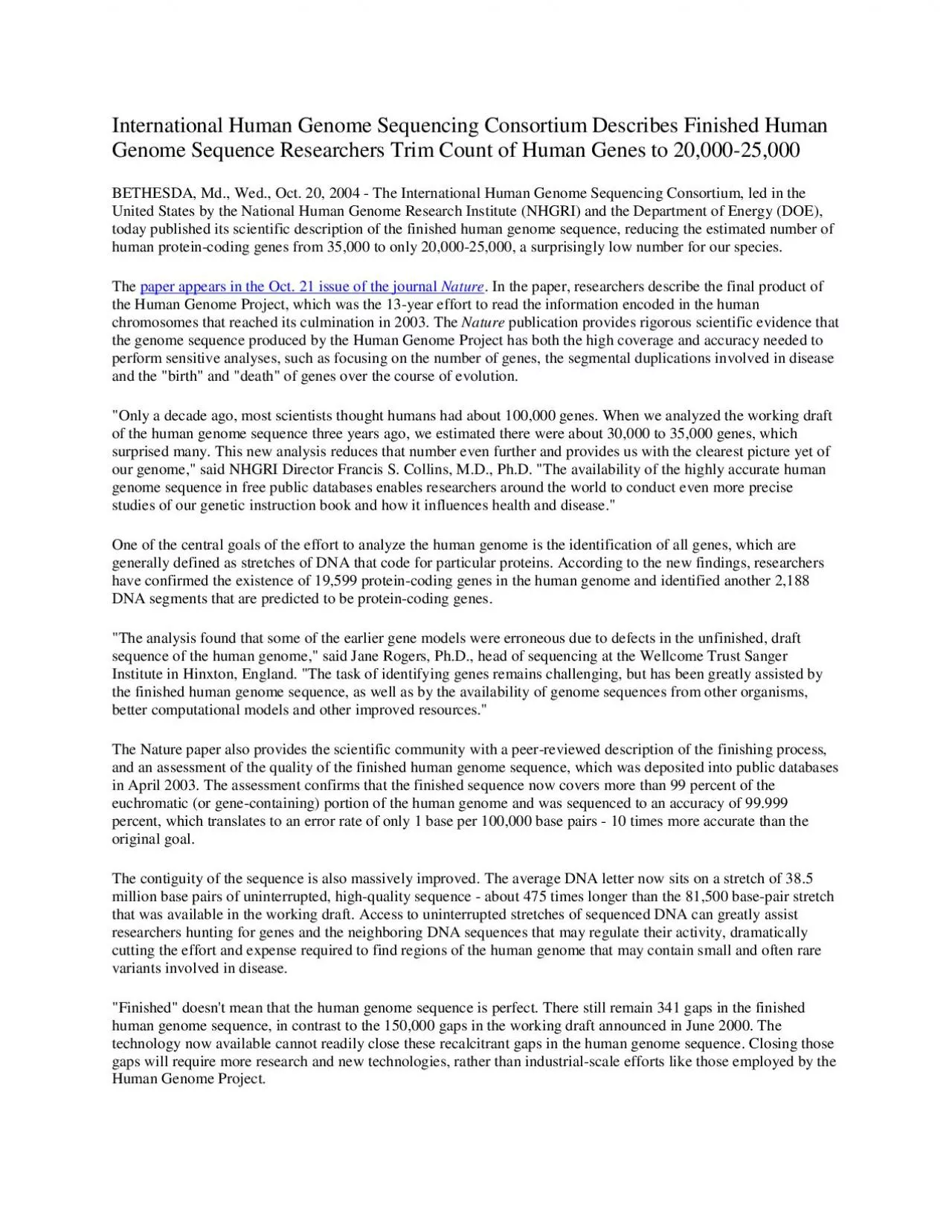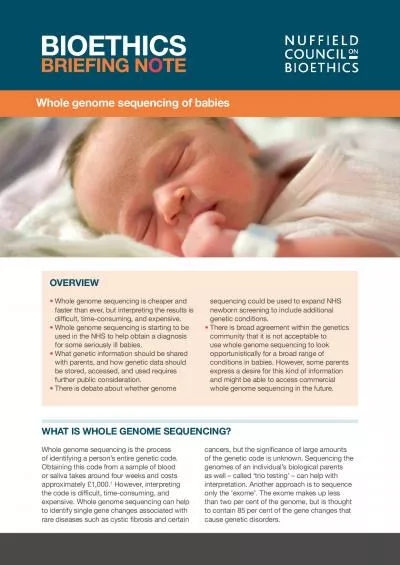PDF-International Human Genome Sequencing Consortium Describes Finished Hu
Author : deena | Published Date : 2022-09-22
In the paper researchers describe the final product of the Human Genome Project which was the 13year effort to read the information encoded in the human chromosomes
Presentation Embed Code
Download Presentation
Download Presentation The PPT/PDF document "International Human Genome Sequencing Co..." is the property of its rightful owner. Permission is granted to download and print the materials on this website for personal, non-commercial use only, and to display it on your personal computer provided you do not modify the materials and that you retain all copyright notices contained in the materials. By downloading content from our website, you accept the terms of this agreement.
International Human Genome Sequencing Consortium Describes Finished Hu: Transcript
Download Rules Of Document
"International Human Genome Sequencing Consortium Describes Finished Hu"The content belongs to its owner. You may download and print it for personal use, without modification, and keep all copyright notices. By downloading, you agree to these terms.
Related Documents














